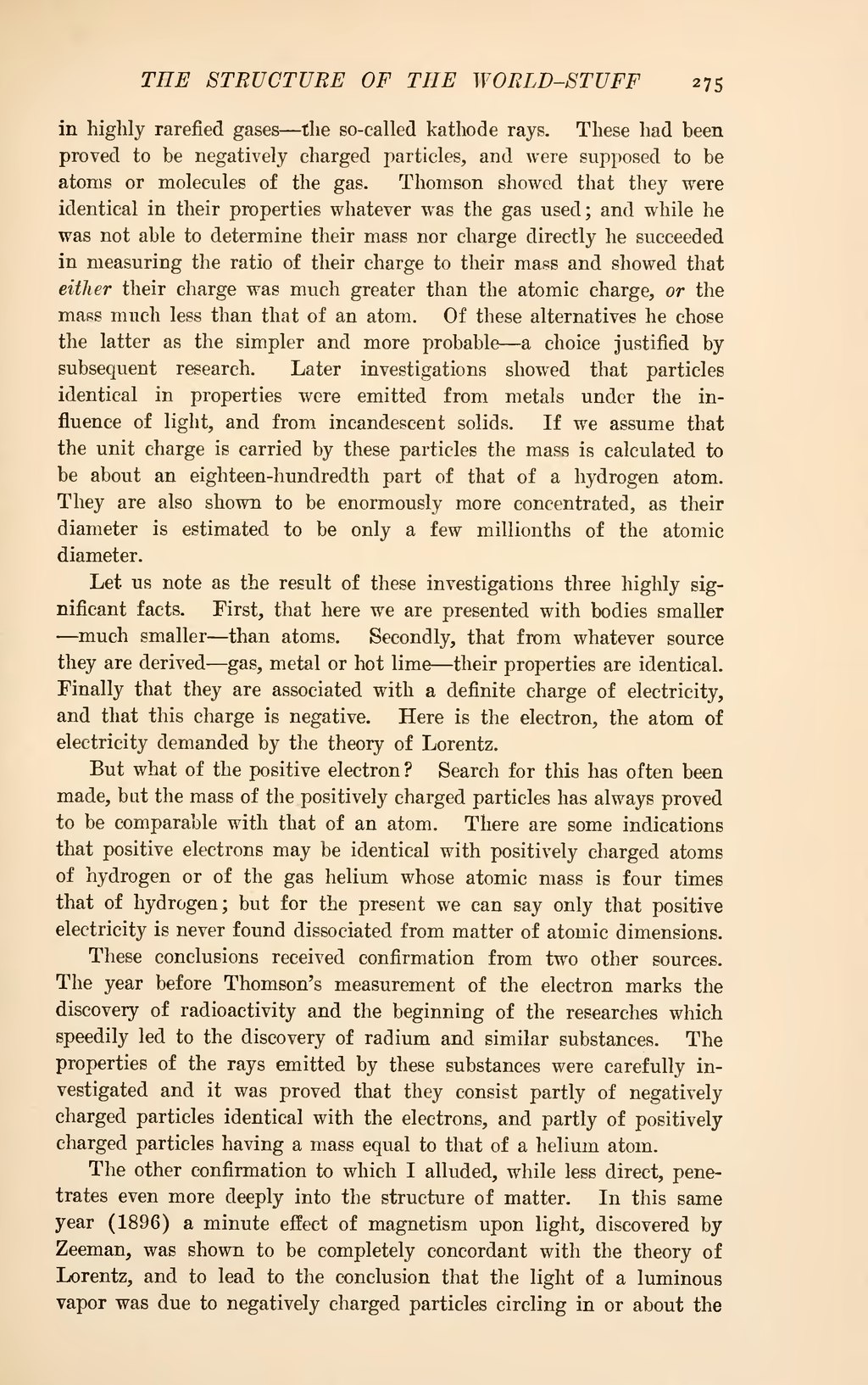in highly rarefied gases—the so-called kathode rays. These had been proved to be negatively charged particles, and were supposed to be atoms or molecules of the gas. Thomson showed that they were identical in their properties whatever was the gas used; and while he was not able to determine their mass nor charge directly he succeeded in measuring the ratio of their charge to their mass and showed that either their charge was much greater than the atomic charge, or the mass much less than that of an atom. Of these alternatives he chose the latter as the simpler and more probable—a choice justified by subsequent research. Later investigations showed that particles identical in properties were emitted from metals under the influence of light, and from incandescent solids. If we assume that the unit charge is carried by these particles the mass is calculated to be about an eighteen-hundredth part of that of a hydrogen atom. They are also shown to be enormously more concentrated, as their diameter is estimated to be only a few millionths of the atomic diameter.
Let us note as the result of these investigations three highly significant facts. First, that here we are presented with bodies smaller—much smaller—than atoms. Secondly, that from whatever source they are derived—gas, metal or hot lime—their properties are identical. Finally that they are associated with a definite charge of electricity, and that this charge is negative. Here is the electron, the atom of electricity demanded by the theory of Lorentz.
But what of the positive electron? Search for this has often been made, but the mass of the positively charged particles has always proved to be comparable with that of an atom. There are some indications that positive electrons may be identical with positively charged atoms of hydrogen or of the gas helium whose atomic mass is four times that of hydrogen; but for the present we can say only that positive electricity is never found dissociated from matter of atomic dimensions.
These conclusions received confirmation from two other sources. The year before Thomson's measurement of the electron marks the discovery of radioactivity and the beginning of the researches which speedily led to the discovery of radium and similar substances. The properties of the rays emitted by these substances were carefully investigated and it was proved that they consist partly of negatively charged particles identical with the electrons, and partly of positively charged particles having a mass equal to that of a helium atom.
The other confirmation to which I alluded, while less direct, penetrates even more deeply into the structure of matter. In this same year (1896) a minute effect of magnetism upon light, discovered by Zeeman, was shown to be completely concordant with the theory of Lorentz, and to lead to the conclusion that the light of a luminous vapor was due to negatively charged particles circling in or about the

